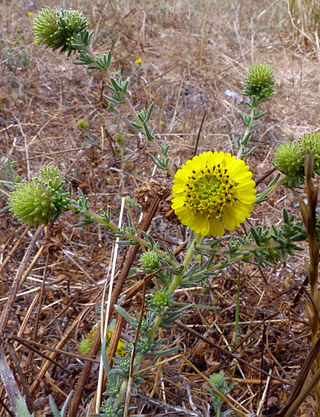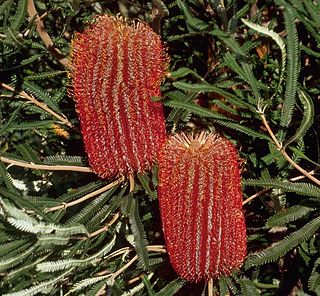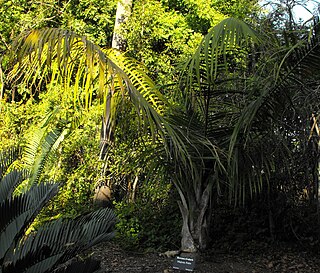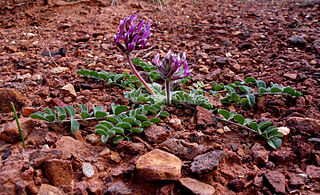This is an index of conservation topics. It is an alphabetical index of articles relating to conservation biology and conservation of the natural environment.

A seed bank stores seeds to preserve genetic diversity; hence it is a type of gene bank. There are many reasons to store seeds. One is to preserve the genes that plant breeders need to increase yield, disease resistance, drought tolerance, nutritional quality, taste, etc. of crops. Another is to forestall loss of genetic diversity in rare or imperiled plant species in an effort to conserve biodiversity ex situ. Many plants that were used centuries ago by humans are used less frequently now; seed banks offer a way to preserve that historical and cultural value. Collections of seeds stored at constant low temperature and low moisture are guarded against loss of genetic resources that are otherwise maintained in situ or in field collections. These alternative "living" collections can be damaged by natural disasters, outbreaks of disease, or war. Seed banks are considered seed libraries, containing valuable information about evolved strategies to combat plant stress, and can be used to create genetically modified versions of existing seeds. The work of seed banks often span decades and even centuries. Most seed banks are publicly funded and seeds are usually available for research that benefits the public.

Ex situ conservation literally means, "off-site conservation". It is the process of protecting an endangered species, variety or breed, of plant or animal outside its natural habitat; for example, by removing part of the population from a threatened habitat and placing it in a new location, an artificial environment which is similar to the natural habitat of the respective animal and within the care of humans, example are zoological parks and wildlife sanctuaries. The degree to which humans control or modify the natural dynamics of the managed population varies widely, and this may include alteration of living environments, reproductive patterns, access to resources, and protection from predation and mortality. Ex situ management can occur within or outside a species' natural geographic range. Individuals maintained ex situ exist outside an ecological niche. This means that they are not under the same selection pressures as wild populations, and they may undergo artificial selection if maintained ex situ for multiple generations.

Banksia cuneata, commonly known as matchstick banksia or Quairading banksia, is an endangered species of flowering plant in the family Proteaceae. Endemic to southwest Western Australia, it belongs to Banksia subg. Isostylis, a sub-genus of three closely related Banksia species with inflorescences or flower clusters that are dome-shaped heads rather than characteristic Banksia flower spikes. A shrub or small tree up to 5 m (16 ft) high, it has prickly foliage and pink and cream flowers. The common name Matchstick Banksia arises from the blooms in late bud, the individual buds of which resemble matchsticks. The species is pollinated by honeyeaters (Meliphagidae).

Holocarpha macradenia, commonly known as the Santa Cruz tarplant, is an endangered plant endemic to Northern California. Alternative common names for this plant are Santa Cruz tarweed or Santa Cruz sunflower.

The Santa Cruz cypress is a species of North American tree within the Cypress family. The species is endemic to the Santa Cruz Mountains within the Santa Cruz and San Mateo counties of west-central California. The U.S. Fish and Wildlife Service listed the species on the Endangered Species Act in 1987 due to increasing threats from habitat loss and disruption of natural forest fire regimes. In 2016, the conservation status of the Santa Cruz cypress changed to Threatened. The cited reasoning was a decrease in threats against their habitat.

Banksia brownii, commonly known as feather-leaved banksia or Brown's banksia, is a species of shrub that grows in southwest Western Australia. A plant with fine feathery leaves and large red-brown flower spikes, it usually grows as an upright bush around two metres (6.6 ft) high, but can also occur as a small tree or a low spreading shrub. First collected in 1829 and published the following year, it is placed in Banksiasubgenus Banksia, section Oncostylis, series Spicigerae. There are two genetically distinct forms.
The soil seed bank is the natural storage of seeds, often dormant, within the soil of most ecosystems. The study of soil seed banks started in 1859 when Charles Darwin observed the emergence of seedlings using soil samples from the bottom of a lake. The first scientific paper on the subject was published in 1882 and reported on the occurrence of seeds at different soil depths. Weed seed banks have been studied intensely in agricultural science because of their important economic impacts; other fields interested in soil seed banks include forest regeneration and restoration ecology.

Ravenea is a genus of 20 known species of palms, all native to Madagascar and the Comoros.

Astragalus bibullatus, the limestone glade milkvetch or Pyne's ground plum, is an endangered species of flowering plant that is endemic to the cedar glades of the central basin of Tennessee in the United States. It is found in only eight populations located within a few kilometers of each other in Rutherford County, Tennessee.
The ecology of Banksia is the relationships and interactions among the plant genus Banksia and its environment. Banksia has a number of adaptations that have so far enabled the genus to survive despite dry, nutrient-poor soil, low rates of seed set, high rates of seed predation and low rates of seedling survival. These adaptations include proteoid roots and lignotubers; specialised floral structures that attract nectariferous animals and ensure effective pollen transfer; and the release of seed in response to bushfire.
Myristica andamanica is a species of plant in the family Myristicaceae. It is endemic to the Andaman and Nicobar Islands. Recent studies by Waman and Bohra (2020) suggested that the seeds can regenerate on their own if they remain undisturbed in soil and favourable microclimatic conditions are available. However, to ensure regular production of seedlings, assisted regeneration was recommended. Retention of seed hull and use of sinking seeds gives high germination percentage. Soaking of seeds in water for 24 h prior to sowing improved germination.

Arctostaphylos confertiflora is a rare species of manzanita known by the common name Santa Rosa Island manzanita. This shrub is endemic to California, where it grows on the sandstone bluffs of Santa Rosa Island in the Channel Islands. This manzanita is listed as an endangered species by the United States Government.

Layia carnosa is a species of flowering plant in the family Asteraceae known by the common name beach tidytips, or beach layia. It is endemic to California, where it lives in beach habitat. It is known from several areas of mostly fragmented coastal habitat, and it was listed as an endangered species in California. On March 31, 2022, the category was changed from endangered species to threatened species by the US Department of the Interior Fish and Wildlife Service.

Astragalus brauntonii is a rare species of milkvetch known by the common name Braunton's milkvetch. It is endemic to California, where it is known from fewer than 20 extant occurrences in the hills and mountains surrounding the Los Angeles Basin in Southern California. This is a federally listed endangered species in the United States.

Dalea foliosa, commonly called leafy prairie clover, is a species of flowering plant in the legume family (Fabaceae). It is an endangered species in the United States, where it occurs in three states: Illinois, Tennessee, and Alabama.

Astragalus holmgreniorum is a rare species of milkvetch known by the common names Holmgren milk-vetch and paradox milk-vetch. It is native to a tiny section of desert shrub woodland on the border between Utah and Arizona, in the far northern Mojave Desert. There are six populations remaining. It is a federally listed endangered species.
Iliamna corei is a rare species of flowering plant in the mallow family known by the common name Peters Mountain mallow. It is endemic to Virginia in the United States, where it is known only from Peters Mountain in Giles County. A single occurrence remains. This is a federally listed endangered species. It is considered "one of the rarest native plants in the United States."

Hakea pulvinifera, also known as Lake Keepit Hakea, is a small, prickly shrub in the family Proteaceae, found only on one rocky hillside at Lake Keepit near Gunnedah in New South Wales, Australia. The species was first described in 1962, believed extinct in 1971 and rediscovered in 1988. The entire species may be of only one genetically unique individual. It is one of only two Hakea species that reproduce solely through basal shoots or 'suckering', reducing genetic variation.

Acanthomintha ilicifolia, known by the common name San Diego thornmint, is a rare species of flowering plant in the mint family. It is native to Baja California and San Diego County, California, where it is a resident of the chaparral and coastal sage scrub plant communities and vernal pools.
















